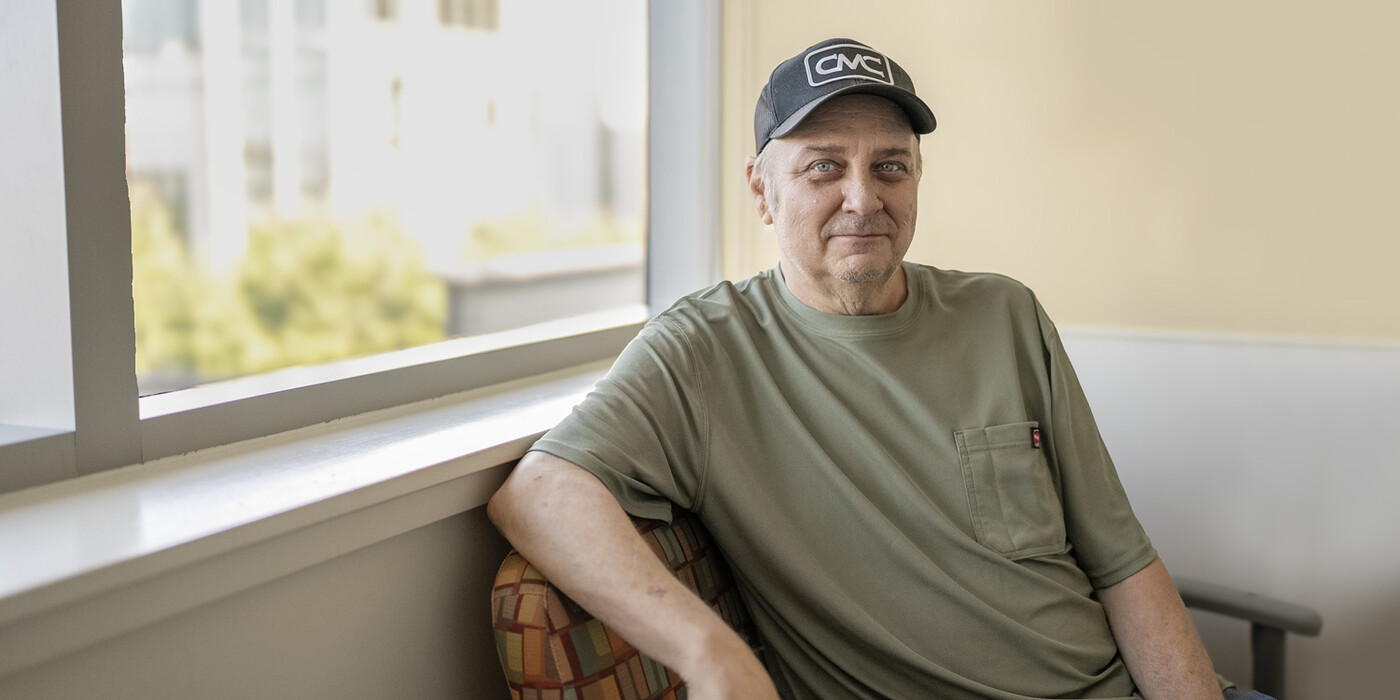Patient-Centered Care for Metastatic Lung Cancer Yields Impressive Results

Roger Parker is being treated for small cell lung cancer at Duke Cancer Center.
Roger Parker, 55, was diagnosed with stage IV small cell lung cancer in February 2024. Following treatment at Duke Cancer Center, including a medication that was just approved by the FDA last year, he’s doing well. “The whole staff at Duke has been great,” he said. “They’re very on top of their game.”
A Life-Changing Diagnosis
In January 2024, Roger Parker of Oxford, NC had pain in his side, and found himself out of breath easily. “I would walk 50 yards, and just feel terrible,” he said. When imaging scans showed several lesions on his adrenal glands, his primary care doctor referred him to Duke where a scan revealed a tumor in his lung. A biopsy of the tumor showed small cell lung cancer, a rare type of lung cancer that has often metastasized by the time it is discovered.
That was the case for Parker. In addition to his adrenal glands, the cancer had spread to some of his lymph nodes.
“It’s Not Curable, but It’s Treatable.”
When Parker met Duke medical oncologist Laura Alder, MD, “She told me from day one: it's not curable, but it's treatable,” he said. In early February 2024, Parker started a combination of chemotherapy and immunotherapy, taking medical leave from his job as a building automation monitor.
“Combining chemotherapy and immunotherapy has been shown to have the most benefit for small cell lung cancer,” said Dr. Alder, “and thankfully, all of Roger’s masses got smaller.”
But in early October 2024, a CT scan showed that a large tumor had developed in his brain. This is common in small cell lung cancer, which often spreads to the brain.
Radiation With a Custom Solution
Parker met with Duke radiation oncologist Christopher R. Kelsey, MD. “Mr. Parker is severely claustrophobic. Some types of radiation require a tight mask fitted over the face and head, along with MRI scans. There is no way he could have tolerated those,” explained Dr. Kelsey. “Instead, we were able to use advanced imaging to treat him effectively without the mask or MRI scans, sparing Mr. Parker anxiety and fear.” After about two weeks of radiation, Parker’s brain tumor went completely away.
Hope in the Form of a New Drug
In February 2025, Parker’s adrenal glands and lymph nodes were showing signs of more cancer. He began a new immunotherapy drug called tarlatamab. “It’s been FDA-approved for a little bit over a year, and it’s a very exciting drug,” said Dr. Alder. “It has really improved the management of small cell lung cancer.”
Duke was part of the clinical trials for tarlatamab, and was one of the first centers to offer it to patients after its FDA approval.
“Since I’ve been on the new drug, the lesions on my adrenal glands have shrunk from two centimeters down to one,” said Parker. His brain has also remained lesion-free.
Because of potential side effects, patients must undergo rigorous monitoring during treatment. Parker stayed overnight at Duke after his first two treatments with tarlatamab. This shrank to six hours of monitoring after his third treatment, and now he’s down to three hours. Because of the monitoring requirement, not all cancer centers are able to provide the drug, said Dr. Alder.
More Treatments on the Horizon
“We continue to watch Roger’s brain and body very carefully,” said Dr. Alder. “If his lung cancer were to progress, we have clinical trials available for small cell lung cancer that he could go on. Our priority is to treat every patient as an individual and really meet their needs.”
Parker is now back to work and walking between one and four miles each day as part of his job. “Dr. Alder has been fantastic. All my doctors at Duke have been great,” said Parker. “I wouldn’t want to go anywhere else.”






